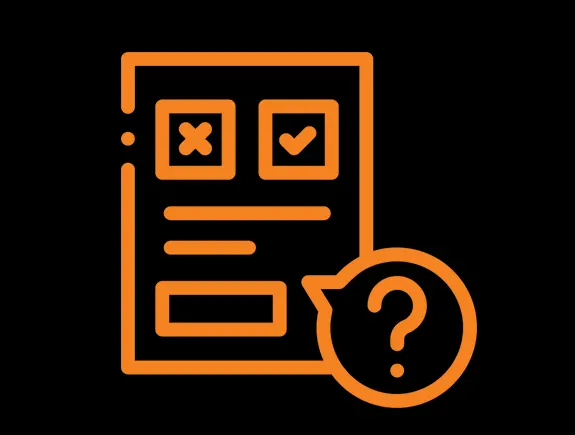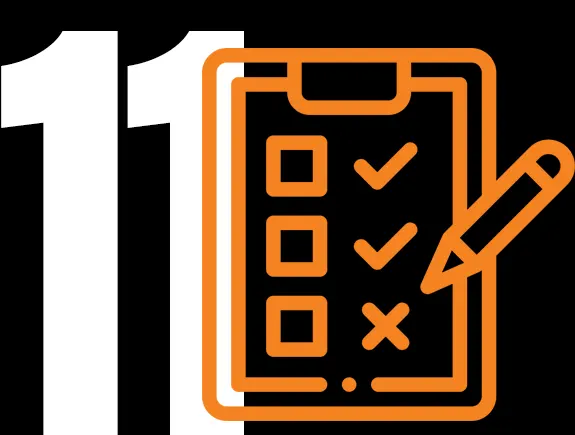The process of constantly working to differentiate your brand from the competition can sometimes be very complex. If we want to be completely honest, then we will say that the process of building and improving a brand is never completely finished. And in order for it to flow smoothly and be successful, you need to have a checklist for brands from which everything starts.
The process of building a brand affects business and revenue in several ways, only some of which are related to marketing and communications. A large part of that influence is also related to how your brand is perceived by the public, i.e. the target group. But also the way it understands the messages that the brand sends.
There are many important details to pay attention to when it comes to the branding process. From building a brand mission, through voice and brand story, to brand consistency with well-thought-out messages. But let’s not forget the logo design, which is also very important for a brand.
All these steps lead us to a brand that looks beautiful, feels accessible to customers and is consistent in its messages. And to achieve all this, you need to know the exact steps. We find them in the checklist for brands. Let’s first see what such a list entails.
What is a Brand Checklist?
A Brand Checklist is a list of elements, processes and specific steps that branding agencies use to build a solid brand foundation. Whether it’s an existing brand or one in the process of rebranding – this list ensures you don’t skip any important steps.
Although business owners often have different views on what should be the focus of brand building, some general rules do exist. Almost all teams working on building brands follow these rules, because they bring success and good results. In this blog post we bring you the most important points that you should focus on.
Brand Checklist – The 11 Most Important Steps
1. Brand mission
Before you even begin this process, it’s crucial to write down your brand mission. Defining the mission and writing it down in a clear statement should articulate the goals and purpose that the brand has set for itself.
While this may seem unnecessary if you have a small business, trust us it’s not. It is important that you write down somewhere how you see your brand in the near future and that all decision makers participate in the process of defining it. This means both the owner and the employee.
2. Brand values
In order for customers or users of your services to understand what values the brand is dedicated to, it should be clearly and constantly discussed. All forms of communication are suitable for this – from social networks, newsletters, etc.
Values can range from“be innovative”to“be different.”But regardless of how you want to be perceived by customers, it’s important to commit to presenting the values everywhere and in every place.
Values are the key to brand growth, because they bring new customers who get to know you through the promotion of a certain value system.
3. Market and industry research
At this stage, it is important to research the state of the particular industry to which the brand belongs. Understanding trends, demand, but also major problems faced by the competition can help a young brand a lot.
Before your brand becomes recognizable in the market and stands out from the competition, it is important to get to know that market well. This step may seem easy to you, but rest assured that many people often skip it, which leads to problems.
4. Getting to know the competition
Along with getting to know the market and the industry, this is another step you should not skip. By getting to know the competition, you will understand where is your brand placed in the market, how it can grow and position itself well.
5. The ideal customer
In order to better understand the user persona, i.e. the ideal customer, it is important to thoroughly research everything related to this matter. Behaviors, demographics, products they like to buy, but also their motivation to do so, are your starting points for better understanding. Each of these details will help you position your brand in the market as well as possible and interest a sufficient number of people in your brand and company.
6. Brand voice
Now that you have a good understanding of your customers, it is not difficult to develop a brand voice. It should comply with the values of the brand equally well, but also to know how to communicate with the target group.
In addition to the values, which should comply with the voice of the brand, attention should also be paid to the mission. These three should form one complex whole. When that is the case, then everyone can easily understand the “brand personality” and the overall image it should have in the public eye.
7. Color palette
Finally it’s time to choose the colors. They are an important element for the best possible presentation of brand values. Colors should fit with the voice of the brand, the wants and needs of customers, but also the market.
Very generally, we associate darker colors with sophisticated brands, while light and especially bright colors are those that tirgger strong emotional reactions in customers. It’s definitely a good idea to let designers think about colors, because they understand it best.
Therefore, if you are in the process of planning a brand and thinking about its visual identity – then it is time to contact our agency. Our designers will create a recognizable visual identity for your brand.
8. Fonts
When choosing fonts for your brand, keep these three basic classifications in mind: serif, sans serif, script. Again, with the help of a designer, this classification will be much clearer to you, so you will be able to narrow down the options and choose the right font for your brand.
Serif fonts are considered sophisticated and classic, while customers find sans serif fonts affordable and easy to relate to because they look modern. Finally, script fonts have a delicate aesthetic, so they can be a great choice for artistic brands.
9. Logo
And now we get to the logo. Most clients identify a brand with a logo, so they completely ignore what needs to be done before its creation. As we can see there are eight steps before that, so only then can we talk about the look of the logo and what it represents.
Working with a designer to create a logo is very important, because you want the logo to be unique and to present your brand in the best way. It also must be designed to fit all surfaces. And a poorly designed logo is easy to spot, so take a look at our blog post on the 7 clear signs of a bad logo design.
10. Promotional materials
Now that you have your brand colors, fonts, and logo, you’re ready for the next step – creating promo materials. When you start thinking about what to put on the list of these materials, be sure to think about their sizes, as well as where you will present them. If you’re thinking about a website (and that should be a priority), think about which of the core elements of your brand identity will be on it.
11. Brand instructions
They are last on our brand checklist. Instructions are key to maintaining a good brand image, so they should be carefully written and explained. These include, among other things, the book of standards, which clarifies the use of logos and other visual elements.
In addition, the instructions must include values, vision and mission. Only when all this is clearly defined can the brand be considered as well-established and ready to launch on the market.
A comprehensive brand checklist helps you navigate this process easier
Now that you have everything in one place, you can easily follow all the steps and successfully form your brand. If you think this is something you want brand experts to handle, then you can contact us and we will create a strategy for your company. Our experts will do everything necessary for your brand to enter the market and experience success and growth there.













